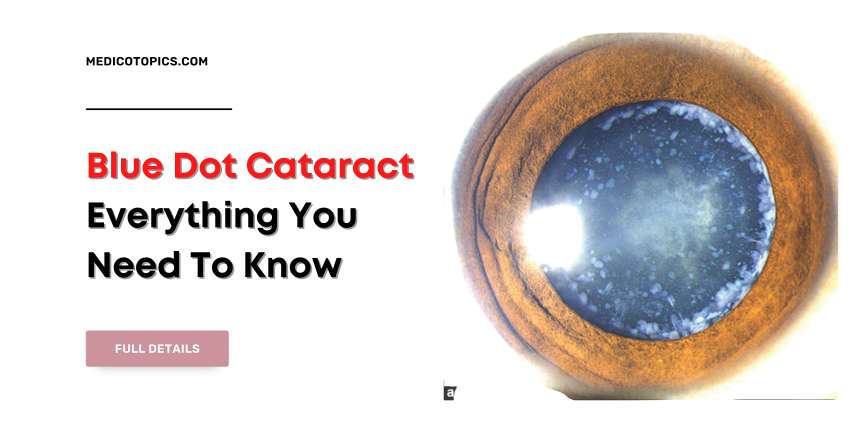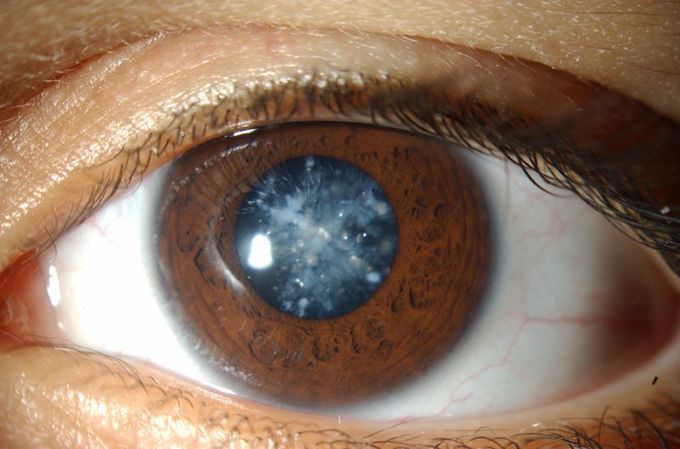
First of all, you don’t have to worry about Blue Dot Cataract, Even though it is a rare condition, It has no complications as when you compare senile cataracts. Not every rare disease needs to be dangerous.
As per the 2019 study says 95% of Blue Dot Cataracts have no need for cataract surgery during their adulthood as the disease doesn’t lead to much of a complication.
In fact, I came across a Blue Dot Cataract case in our hospital and the professor said they’ve been watching him for 12 years so far still he doesn’t need surgery. Woah!
Let me walk you through this rare congenital disorder to clarify all your doubts.
What are Blue dot cataracts?
Blue dot cataracts or Cataracta Punctata Caerulea or Cerulean Cataracts are developmental cataracts with blue and white opacifications spread throughout the nucleus and cortex of the lens. Blue dot cataracts are normally asymptomatic until the age of 18-24 months, and they are rarely removed until adolescence. Surgical cataract removal and Posterior Chamber Intra Ocular Lens implantation are used to treat the condition.
Blue dot cataracts causes
It is a congenital disease that is inherited as an autosomal dominant trait.
Blue dot cataracts symptoms
- Asymptomatic
- The patient may develop cataracts at an adult younger age
- Blurred or dim vision
- Nyctalopia
- Photophobia and glare
- Colored halos
Blue dot cataracts signs

- Discrete punctuate bilateral, blue-white opacities throughout the cortex
- If the opacities form a ring at the lens equator, the cataract is called a coronary cataract
Patients can be diagnosed with a slit-lamp examination as young as 18 months old, which will demonstrate microscopic blue and/or white opacities in the lens nucleus’ superficial layer.
Blue dot cataract Diagnosis
Patients with Blue dot cataracts normally have good vision and don’t need cataract surgery until they’re well into adulthood. Blue dot cataracts are classified as a kind of developing cataract rather than a genuine congenital cataract since many neonates remain asymptomatic until they are 18-24 months old. Blue dot cataracts progress slowly, and symptoms may not appear until the third or fourth decade of life when patients detect a progressive loss of vision in both eyes. Children who show evidence of visually significant cataracts such as nystagmus and amblyopia, on the other hand, may need cataract surgery sooner.
Blue dot cataract treatment
Blue dot cataracts have no known treatments to prevent their development and progression. The standard of management includes regular eye tests and, eventually, cataract surgery. A SICS or a Phacoemulsification surgery may be performed.
You might like this one – Teenager raised as a boy, becomes pregnant (PMDS syndrome pregnancy)
Get the latest Football news on Medico topics and its Twitter handle
I’m Nawin (Admin), a seasoned doctor and accomplished content writer with 8 years of experience. Join me as I unravel the latest breaking news, unveil behind-the-scenes happenings, and explore the aftermath scenes. With my expertise, I’ve crafted this renowned news site to provide you with an authentic perspective on daily happenings. Get ready to delve into a world of truth and knowledge on Medico Topics.
